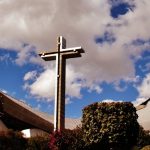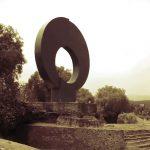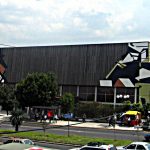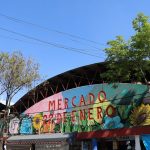
La Torre de los Vientos es una de las esculturas más fotografiadas y quizás más visitadas de la Ruta de la Amistad. Totalmente rehabilitada en 1996, la obra es única por constituir una especie de destino visitable en lugar de una curiosidad de paso.
La torre data de 1968 con el resto de la Ruta de la Amistad. Concebida y creada por el arquitecto uruguayo Gonzalo Fonseca, tiene 13 metros de altura. Fue fabricada con tubos de acero huecos, recubiertos de hormigón fundido. Es la única obra de la serie que tiene un interior además de un exterior, aunque muchos de los artistas de la ruta tienen alguna relación con la arquitectura.
La obra de Fonseca data, sin embargo, de los primeros años de la “dictadura cívico militar” en Uruguay. México llegaría a acoger a cientos de refugiados y expatriados uruguayos en los años siguientes. Esto es recordado principalmente en la Plaza Uruguay de Polanco. Fonseca pretendía que su torre fuera un refugio, al menos simbólico, para quien lo necesitara. El interior está iluminado por una claraboya circular. Esto inunda de luz los 80 metros cuadrados de espacio. El sencillo mobiliario de hormigón lo hace casi acogedor, y el artista incluyó una pequeña nevera y un suministro de agua.
La Torre de los Vientos cayó en un considerable abandono durante casi tres décadas; las obras de rehabilitación fueron llevadas a cabo por el World Monuments Fund en 1996. También se contó con el apoyo de algunas embajadas locales. Hoy, a veces se utiliza como espacio de arte contemporáneo. Unos 75 proyectos artísticos han tomado forma allí en los últimos 25 años.

Cercano a 0.19 kms.

Cercano a 0.34 kms.

Cercano a 0.46 kms.

Una obra ampliamente simbólica en la Ruta de la Amistad...

Uno de los centros de música y artes escénicas más importantes de la ciudad...

Un gran mercado de barrio en el sur de la ciudad...

Uno de los sitios religiosos más asombrosos de Tlalpan...

Una de las áreas naturales más queridas de la ciudad, también es siempre un soplo de aire fresco.